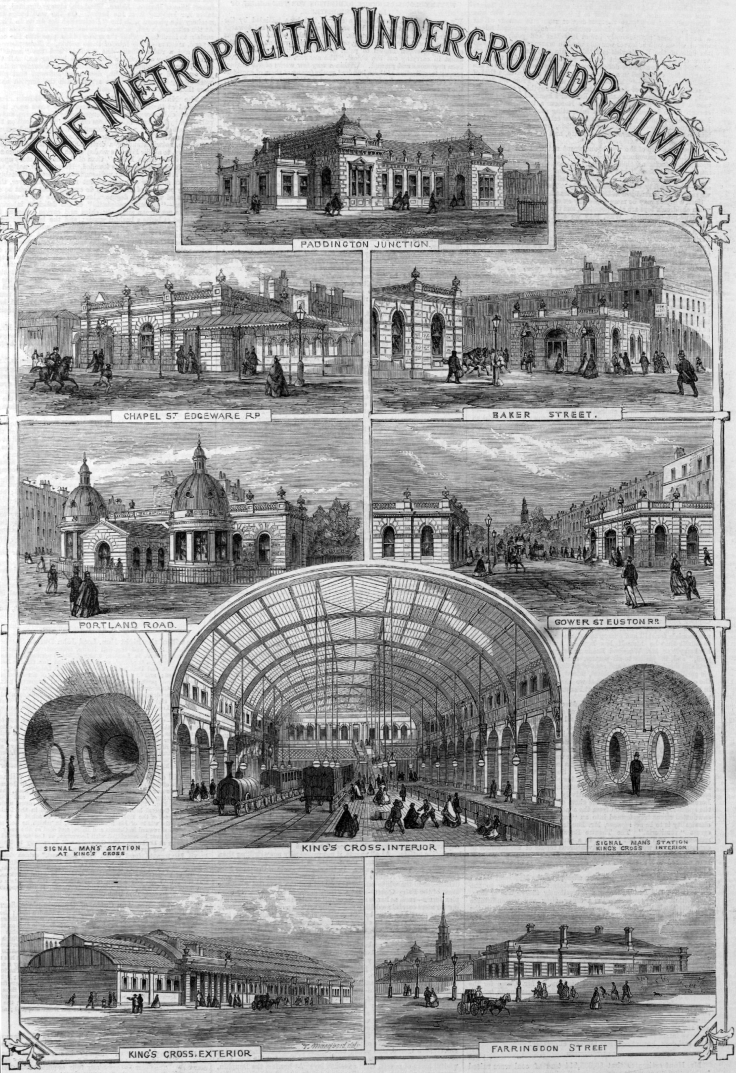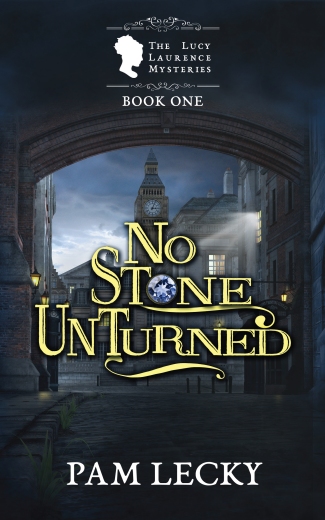Early History of King’s Cross
The area now known as King’s Cross is reputedly an ancient crossing point of the River Fleet, and it is believed to be the site of the legendary battle between the Romans and Queen Boudicca. The queen’s resting place is said to be under Platform Nine of the present station. The locality remained predominantly rural during the 18th century and was a popular retreat for Londoners availing of its health spas and country inns.
Once the Regent’s Canal was completed in 1820, King’s Cross was linked to major cities in the industrialised north. This led to the establishment of a number of polluting businesses over the following decades. In an effort to improve the image of the area, a statue of King George IV was erected. Unfortunately, the statue attracted ridicule and was eventually demolished in 1842. However, the new name for the area – ‘King’s Cross’ – stuck.
The first temporary King’s Cross Station was opened in 1850, north of the canal, and was the London hub of the Great Northern Railway. Queen Victoria left for her beloved Scotland from this station in 1851. The present station, designed by architect Lewis Cubitt, was built in a near-by location and opened with two platforms in 1852.
London’s Traffic Congestion and the Birth of the Metropolitan Underground Line
However, by 1850 there were seven railway termini around the urban centre of London but only Fenchurch Street Station was within the City. The increasing residential population, and the commuting population who arrived by train each day, led to a high level of traffic congestion with huge numbers of carts, cabs, and omnibuses. Up to 200,000 people entered the City of London, each day, on foot.
Overground railway solutions were not viable and this prompted various proposals to build an underground system. Royal assent was finally granted to the North Metropolitan Railway Act on 7 August 1854.

The initial estimate for the construction of the Metropolitan Line was £1m. However, due to the Crimean War, the company found it difficult to raise capital and the project didn’t commence until March 1860. Construction would be tricky in the centre of London but the company forged ahead using the cut-and-cover method from Paddington to King’s Cross. To the east of King’s Cross, a tunnel continued under Mount Pleasant, Clerkenwell and then followed the culverted River Fleet beside Farringdon Road.

Teams of navvies were employed to manually excavate the trenches which were 33 feet wide with brick retaining walls. Then a roof of either a brick arch or iron girders was placed on top. They made the tunnels wider at stations to make room for the platforms.
The first trial runs were carried out from November 1861 and the first complete trip over the line was in May 1862. The work was eventually completed in 1862 at a cost of £1.3m.
The grand opening for the 600 shareholders and their guests was held on 9th January 1863 with a large banquet at Farringdon. The public opening of the line was the following day, with 38,000 passengers using the line. In the first 12 months 9.5 million passengers were carried and in the second 12 months this increased to 12 million.
The original timetable specified 18 minutes for the journey with off-peak service frequency of every 15 minutes, increasing to 10 minutes during peak time.

For some reason the engineers assumed the locomotives used on the line would be smokeless and little or no ventilation was installed. This was compounded by a long tunnel between Edgware Road and King’s Cross. Luckily, the smoke filled stations and carriages didn’t put off commuters who were delighted with the efficiency of the service. Later on, the ventilation was improved by making an opening in the tunnel between Gower Street and King’s Cross and by removing some roof glass panels at some stations.
Over the following decades, the line was extended and finally, in 1898, permission to use electric traction was granted.
In No Stone Unturned, my heroine Lucy Lawrence visits King’s Cross Station on many occasions. Her family home is in Yorkshire and King’s Cross was the terminus for northbound trains. However, it is when Lucy’s life is in danger that she finds herself at the top of the steps of King’s Cross Underground with her pursuers not far behind …

When I began to do my research, I realised my knowledge of the Victorian underground system was scanty at best. Luckily, I discovered the wonderful London Transport Museum online. They very kindly answered all of my questions, even sending me timetables from the period I was interested in, and giving me the journey time I required from King’s Cross to Farringdon Street Station (which is an impressive 4 minutes, by the way, in 1886).
During my research I was amazed to discover that steam locomotives were being used on the underground in 1886. Although the trains were a godsend for the working man and woman, the dirt and steam must have put off many of the more well-to-do Londoners. But I could not resist sending my Lucy down into the King’s Cross underground station as a means of escape.
***
No Stone Unturned is the first book in the Lucy Lawrence Mystery Series.
 A suspicious death, stolen gems and an unclaimed reward: who will be the victor in a deadly game of cat and mouse?
A suspicious death, stolen gems and an unclaimed reward: who will be the victor in a deadly game of cat and mouse?
London October 1886: Trapped in a troubled marriage, Lucy Lawrence is ripe for an adventure. But when she meets the enigmatic Phineas Stone, over the body of her husband in the mortuary, her world begins to fall apart.
When her late husband’s secrets spill from the grave and her life is threatened by the leader of London’s most notorious gang, Lucy must find the strength to rise to the challenge. But who can she trust and how is she to stay out of the murderous clutches of London’s most dangerous criminal?



A fascinating potted history Pam. I’ve pre-ordered your book which I’m sure will be excellent. A nice story about Boudicca even if speculative 🙂
LikeLiked by 1 person
Thanks so much Roy
LikeLike
I’m very familiar with this station (we visit London often), but this history is fascinating. Thanks!
LikeLiked by 1 person
Yes I always wondered where the name came from.
LikeLiked by 1 person
I used King’s Cross regularly when I lived in London, but had no idea why it was called that. A fascinating history, Pam – especially the bit about the steam trains underground. It was bad enough when it people smoked, never mind the trains!
LikeLiked by 1 person
Yes the steam trains must have made it a horrible way to travel but I guess the efficiency if the service outweighed the discomfort.
LikeLike